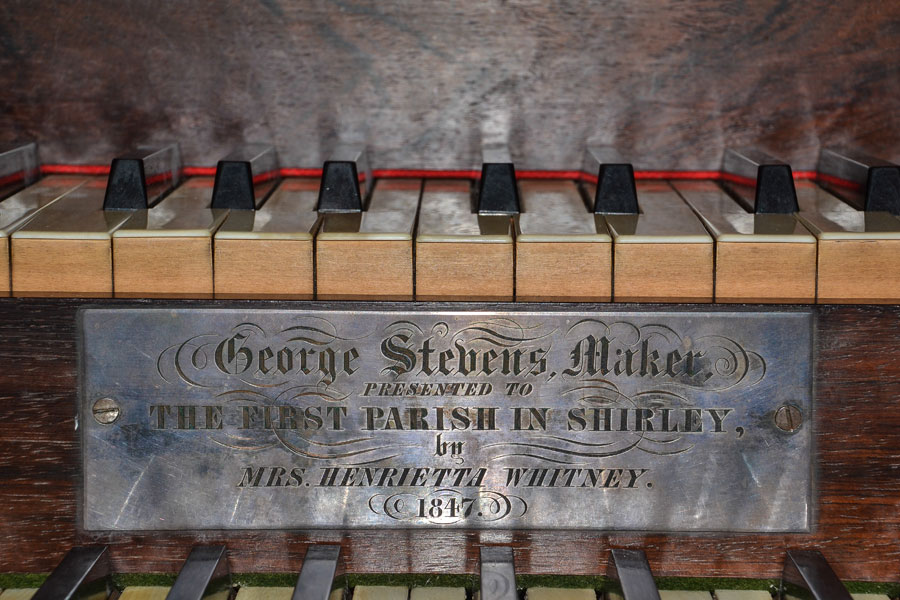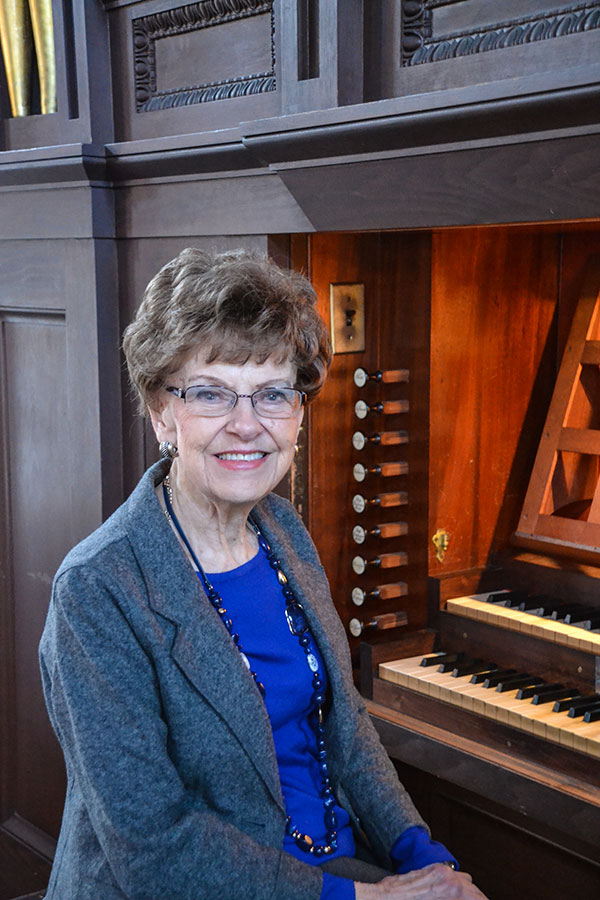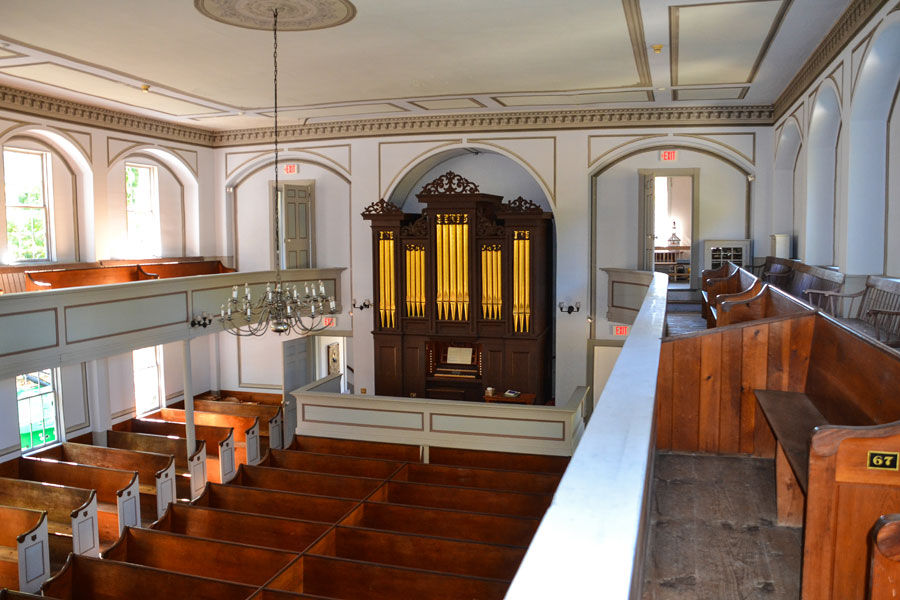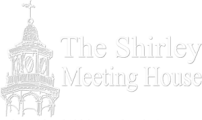Stevens Tracker Organ
The Shirley Meeting House organ, a gift of Mrs. Henrietta Whitney, was built in 1847 by George Stevens of Cambridge, Massachusetts. Although not considered to be “style leaders”, Stevens organs were made of fine materials and exquisite in their construction.
In 1962, cabinet-and-instrument-maker Douglas Brown renovated the organ, maintaining its original qualities. The Andover Organ Company later made repairs to the front pipes. More recently, George Bozeman, Jr. retuned the organ to the old English “modified-meantone temperament”.
The Steven Tracker Organ preserves the archaic peculiarities of English organs built during the first quarter of the 19th century.
To encourage instrumentalists to enjoy its unique features, organist Lois Toeppner, M.M, has provided the following information:


The keyboards of this organ have unusual compasses. The manuals’ lowest note is a GG, two and a half octaves below middle c’ and there is no low GG#, a typical omission of this period in American organs. The highest note is f3. The Pedal keyboard also starts at GG, does include GG#, and has only one octave of notes and pipes. Obviously, because of its short and unusual compass it is useless for normal Pedal parts such as in a Bach Fugue. Use it instead for pedal points and at cadences.
The stopknobs on the left side belong to the Great Organ; the Swell Organ knobs and the couplers are on the right side. None of the stops have pitch numbers such as 8′, 4′, etc. This is because during this period the pitch of the stop was inherent in the name. The Diapasons Open and Stopped, Dulciana, and Hautboy are all unison stops. The Principal and the Flute are an octave higher (what we call 4′), and the Twelfth and Fifteenth should be self-explanatory (i.e. 2 2/3′ and 2′). The Pedal Sub Bass is a unison stop, the same pitch as the Open Diapason. Some of the stops are divided. The Swell pedal is a lever to the right of the Pedal board and has a notch to slide it into in order to keep the Swell shutters open. One must keep one’s foot on the pedal or leave the shutters closed. The shutters are weighted to close
This organ can still be pumped by hand, and you should experience this if possible. If you are fortunate enough to have someone willing to pump while you play you can easily imagine yourself living a century and a half ago. Since the organ is tuned in an old-English modified-turning, instrumentalists may have difficulty tuning to it. Allow a trial before committing a soloist to a program.
Playing this wonderful little organ is a rare treat. We are very lucky that the good people of Shirley have so lovingly preserved it for us to enjoy.”

